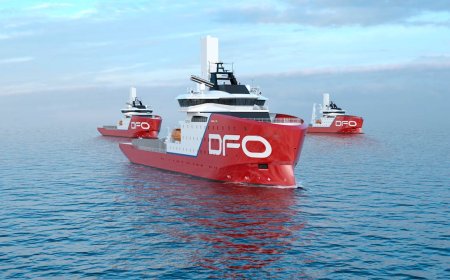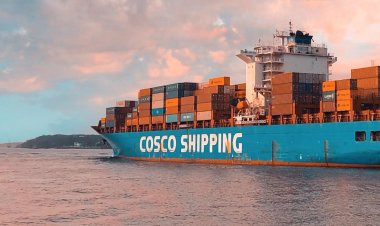APM Terminals Elizabeth converts to green energy
In January 2021, APM Terminals Elizabeth started to use green power, from a supplier that offers renewables such as wind and solar.

APM Terminals Elizabeth embarked on a decarbonizing plan in 2016 as part of a multi-year effort to reduce energy consumption through improved efficiency, equipment upgrades, and electrification to reduce emissions and create a safer, cleaner working environment for employees. The project has generated a reduction in CO2 emissions from an average of 18 kg CO2/TEU in 2016, to 16 kg CO2/TEU in 2020.
In January 2021, APM Terminals Elizabeth took the next step in their decarbonization journey, by starting to use green power, from a supplier that offers renewables such as wind and solar. This is expected to reduce CO2 emissions by 45% in 2021, slashing 7 kg CO2/TEU from the current 16 kg CO2/TEU intensity. This translates into an estimated emissions reduction of 8000 metric tons of CO2 in 2021.
Jon Poelma, Managing Director of APM Terminals Elizabeth, said:
“Our decision to pursue greensourced energy reflects our overall long-term company plans to decarbonize our terminal operations. We’re progressing on that goal through a multi-year program that aligns with our customers who are also decarbonizing their logistics chains and looking to work with like-minded companies.”
APM Terminals Elizabeth has also introduced a new gate complex designed to improve the trucker experience, reduce truck idling and improve turn times. Average turnaround time reductions of 11 minutes have already been seen, representing a reduction of 3 kilograms CO2/TEU, benefiting the trucker community and wider New Jersey port area.
Other actions underway to reduce emissions include improving operational efficiencies and traffic management on the terminal.
Mr. Poelma added:
“We’re on a path to achieving net zero carbon emissions and making significant steps this year. We will continue to focus on emission reduction and working with our customers to reduce their supply chain emissions, while collaborating with federal, state and local authorities to achieve this goal together."
APM Terminals Elizabeth operates one of the largest container terminals in the Port of New York/New Jersey, investing $200 million in upgrading the facility to improve the customer experience, enhance productivity and expand capacity for future growth as part of a five year modernization program. A near dock rail facility, Millennium Marine Rail (MMR) is operated jointly with Maher Terminals and handles 60% of intermodal cargo to the hinterland - as part of APM Terminals Elizabeth’ gateway port, first call vessel status.
Graph shows operational carbon intensity (kgCO2/TEU) for 2016 – 2020, and forecasted intensity in 2021 once switched to wind energy. Emissions are calculated from monthly fuel and electricity consumption following the Green House Gas Protocol, and divided by the number of containers moved across the berth. This gives the operational emission intensity figure.

























































































































































